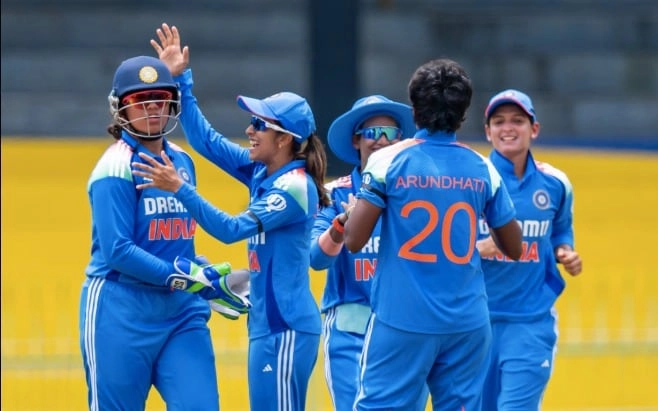In a recent cricket match during the Women’s Tri-Series opener against Sri Lanka, the Indian women’s cricket team faced penalties due to a slow over-rate. This decision came after the match officials determined that the team failed to complete their overs within the stipulated time frame, leading to a fine imposed on the players. Slow over-rate has been a persistent issue in cricket, affecting the flow of the game and often resulting in sanctions for teams. The fine serves as a reminder of the importance of maintaining the pace of play, ensuring that matches are completed in a timely manner while keeping spectators engaged.
The incident highlights the ongoing challenge faced by teams, particularly in the women’s game, where the pressure to perform can sometimes lead to lapses in adherence to regulations. The Indian team, known for its competitive spirit and skill, will likely view this fine as a learning opportunity. The coaching staff and players will need to strategize on how to manage their time more effectively during matches to avoid future penalties. This is crucial, especially with the growing popularity of women’s cricket and the increasing scrutiny from fans and governing bodies alike.
Moreover, the slow over-rate issue is not limited to just one team or tournament; it is a broader concern that has prompted cricket boards worldwide to impose stricter measures. Teams at all levels are being encouraged to find ways to enhance their efficiency, whether through better time management or improved on-field communication. As the Indian women’s team looks ahead, they will need to address this aspect of their game while continuing to build on their strengths. The focus will be on ensuring that such incidents do not overshadow the team’s performance and achievements on the field, especially as they compete in high-stakes tournaments.
In conclusion, while the fine serves as a setback, it is also an opportunity for growth and improvement for the Indian women’s cricket team. By taking heed of this situation and working to enhance their over-rate, they can better position themselves for success in future matches. As the women’s game continues to evolve, maintaining a swift pace of play will be essential for teams looking to thrive in this competitive environment. The Indian team has the potential to turn this challenge into a stepping stone, showcasing their resilience and commitment to excellence in the sport.




